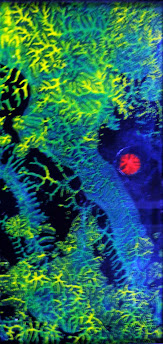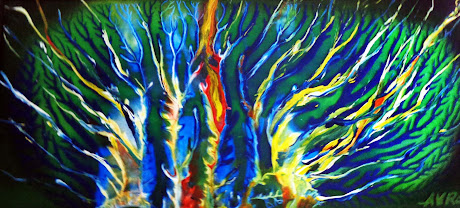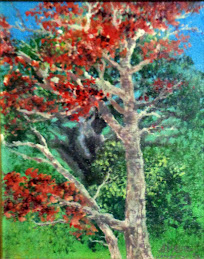June is Philippine Environment Month
20 Evolving Art Scenes of Our Changing Environment
On display at the Living with Nature Center
San Vicente, Ilocos Sur
Paintings by Dr Abe V Rotor
“If the environment is happy, people will laugh and your grief will go away.”― Srinivas Mishra
Our changing environment refers to the ongoing changes happening to the planet, primarily due to human activities like burning fossil fuels and deforestation. These changes include global warming, rising sea levels, and altered ecosystems. Climate change is a significant aspect of these changes, with impacts including more extreme weather, melting ice, and rising sea levels.AI Overview Internet

Flow Gently Sweet Afton, local counterpart
“An understanding of the natural world and what’s in it is a source of not only a great curiosity but great fulfillment.” —David Attenborough
Ecosystems endangered - coral reef and forest
“The earth is always changing...readjusting to our existence. Each era is full of unique challenges”― Val Uchendu
Two colonies - marine and terrestrial
“The Earth is what we all have in common.”—Wendell Berry
Birds in the trees; fish in the deep
“Look deep into nature, and then you will understand everything better.” —Albert Einstein
Boys in the woods adventure; family of fish
“To leave the world better than you found it, sometimes you have to pick up other people’s trash.” —Bill Nye
Oil spill in two stages
“Live in each season as it passes; breathe the air, drink the drink, taste the fruit, and resign yourself to the influence of each.” — Henry David Thoreau
Aftermath of oil spill on marine ecosystem.
“Together we can preserve the forest, securing this immense treasure for the future of all these children.”— Chico Mendes
Evolution of life in two stages
And into the forest I go, to lose my mind and my soul.” —John Muir
“The ultimate test of a man's conscience may be his willingness to sacrifice something today for future generations whose words of thanks will not be heard.” — Gaylord Nelson
The Day After dreadful scenarios
“Look after the land and the land will look after you, destroy the land and it will destroy you.” —Aboriginal Proverb
“We are the first generation to feel the impact of climate change and the last generation that can do something about it.”— Barack Obama
New species emerging from genetic engineering
“Earth rejoices our words, breathing and peaceful steps. Let every breath, every word and every step make the mother earth proud of us.”― Amit Ray
Where have all the fire trees - and the children - gone?
"There can be no purpose more enspiriting than to begin the age of restoration, reweaving the wondrous diversity of life that still surrounds us." — E.O. Wilson ~



















No comments:
Post a Comment